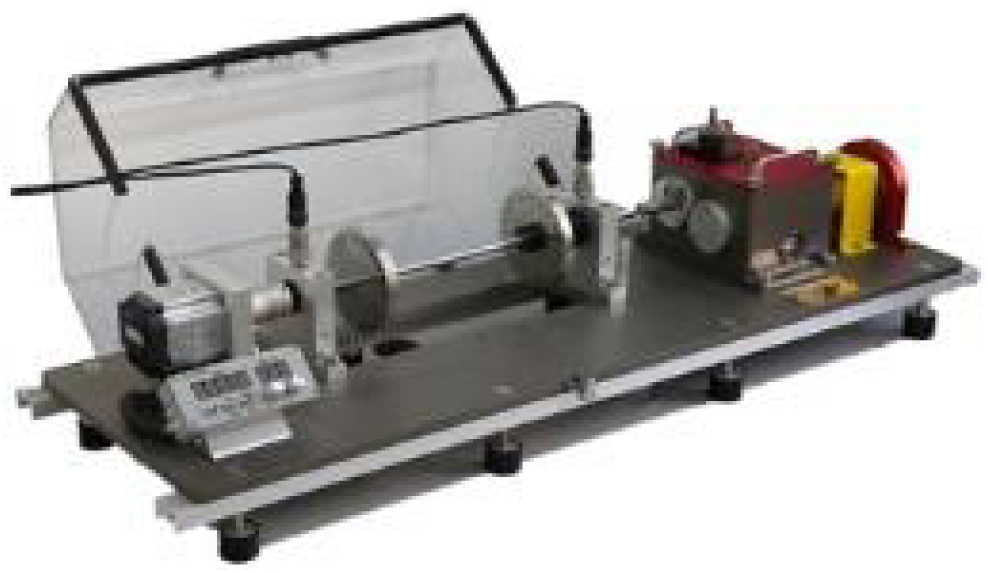
The bearing vibration fault monitoring of advanced printing systems is crucial for ensuring system reliability, improving print quality, and enhancing production efficiency. In consideration of the high noise and strong interference attributes of bearing vibration signals of printing equipment caused by complex environmental factors, the original data noise interference is suppressed by a diagnostic approach for rolling bearing vibration signal faults combined Complementary Ensemble Empirical Mode Decomposition with Adaptive Noise (CEEMDAN) and Dung Beetle Optimization-Support Vector Machine (DBO-SVM) proposed in this article. This method suppresses noise interference in the original data by decomposing and reconstructing vibration signals, and innovatively proposes the DBO-optimized SVM to address the problems of poor anti-interference ability and weak generalization ability of a single intelligent diagnostic method, effectively improving the fault diagnosis rate. First, the decomposition by CEEMDAN effectively overcomes the difficulties of modal aliasing and significant reconstruction errors found in traditional empirical mode decomposition (EMD). The optimal component reconstruction strategy considering the Correlation Coefficient and the Variance Contribution Rate is designed to obtain the vibration signal after noise reduction. Second, to effectively avoid the limitation of heavily relying on expert experience for hyperparameter adjustment, a DBO-SVM model is constructed utilizing a heuristic beetle optimization algorithm, dynamically optimizing the key kernel function parameters and penalty factors of SVM. Finally, the algorithm’s performance was tested using public datasets and self-tested data from Case Western Reserve University. The results indicate that the proposed approach achieves greater diagnostic accuracy and exhibits robust generalization.

Automatic assessment of image aesthetics is a challenging task for the computer vision community that has a wide range of applications. The most promising state-of-the-art approaches are based on deep learning methods that jointly predict aesthetics-related attributes and aesthetics score. In this article, we propose a method that learns the aesthetics score on the basis of the prediction of aesthetics-related attributes. To this end, we extract a multi-level spatially pooled (MLSP) features set from a pretrained ImageNet network and then these features are used to train a Multi Layer Perceptron (MLP) to predict image aesthetics-related attributes. A Support Vector Regression machine (SVR) is finally used to estimate the image aesthetics score starting from the aesthetics-related attributes. Experimental results on the ”Aesthetics with Attributes Database” (AADB) demonstrate the effectiveness of our approach that outperforms the state of the art of about 5.5% in terms of Spearman’s Rankorder Correlation Coefficient (SROCC).

A novel acceleration strategy is presented for computer vision and machine learning field from both algorithmic and hardware implementation perspective. With our approach, complex mathematical functions such as multiplication can be greatly simplified. As a result, an accelerated machine learning method requires no more than ADD operations, which tremendously reduces processing time, hardware complexity and power consumption. The applicability is illustrated by going through a machine learning example of HOG+SVM, where the accelerated version achieves comparable accuracy based on real datasets of human figure and digits.

Hand gesture recognition is a crucial but challenging task in the field of Virtual Reality (VR) and Human Computer Interaction (HCI). In this paper, a skeleton-based dynamic hand gesture recognition approach is proposed, in which the skeleton structure of the hand captured by 3D depth sensor is firstly exploited and the spatiotemporal multi-fused features that concatenate four skeleton hand shape features and one hand direction feature are extracted. Then the hand shape features are encoded by Fisher Vector obtained from a Gaussian Mixture Model (GMM). To add the temporal information, hand shape Fisher Vector and hand direction feature are represented by a Temporal Pyramid (TP) to obtain the final feature vectors to be fed into a linear SVM classifier to recognize. The proposed approach is evaluated on a challenging dataset containing eight gestures performed by ten participants. Compared with the state-of-the-art dynamic hand gesture recognition methods, the proposed method shows a relative high recognition accuracy of 90.0%.

In the recent years, the global penetration of Internet and the rapid spread of mobile devices have led to an exponential rise of trade in counterfeit and pirated goods with a negative impact on the profits of affected firms and consequently damage for employment and economic growth. This peculiar online trade has taken place mostly on deep web, but today it has started to shift to common IM platform and image based social networks. Regard to this context, this work presents a specific multimedia analytics platform, that monitors image catalogues promoting potential counterfeit products on social networks in order to extract useful information (as email, WeChat or WhatsApp, external links to specific online marketplaces) and profile the potential fakers. The preliminary results, derived by considering the image catalogues shared by various sellers on image based social networks, show the effectiveness of the proposed multimedia analytics methodologies.

Towards the establishment of the preventive medical care for the cerebral aneurysm, this paper proposes an SVM based method for building a discrimination function that classifies the presence or absence of the cerebral aneurysm using the cerebral blood vessel's shape features obtained from medical images such as MR images. Using the discrimination function, this paper explores how much each feature affects the onset of the cerebral aneurysm. This paper deals with the internal carotid artery (ICA). The blood vessel (ICA)'s shape features are extracted from medical images of 18 persons without cerebral aneurysm and 13 patients with a cerebral aneurysm. From the medical image, the cross sections and centerline of the ICA are obtained. The cross sections are divided into nine sections along the centerline. Shape features such as the cross sectional area, its circularity, curvature, torsion, length of the centerline and branch angles are obtained in each section; as a total, 113 features including the mean and variance of some features in each section are used for building the SVM. As a result of conducting the experiments, the accuracy for discriminating the presence/absence of the aneurysm by the SVM is 90.3%. In the obtained discrimination function, the coefficient values of the function can be considered how much the features affect the onset of the aneurysm. The features that could significantly cause the onset of the cerebral aneurysm are clarified, and the reasons why these features are significant are discussed.

This paper proposes a real-time vehicle tracking and type recognition system. An object tracker is recruited to detect vehicles within CCTV video footage. Subsequently, the vehicle region-of-interest within each frame are analysed using a set of features that consists of Region Features, Histogram of Oriented Gradient (HOG) and Local Binary Pattern (LBP) histogram features. Finally, a Support Vector Machine (SVM) is recruited as the classification tool to categorize vehicles into two classes: cars and vans. The proposed technique was tested on a dataset of 60 vehicles comprising of a mix of frontal/rear and angular views. Experimental results prove that the proposed technique offers a very high level of accuracy thereby promising applicability in real-life situations.